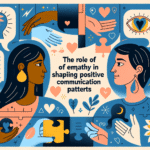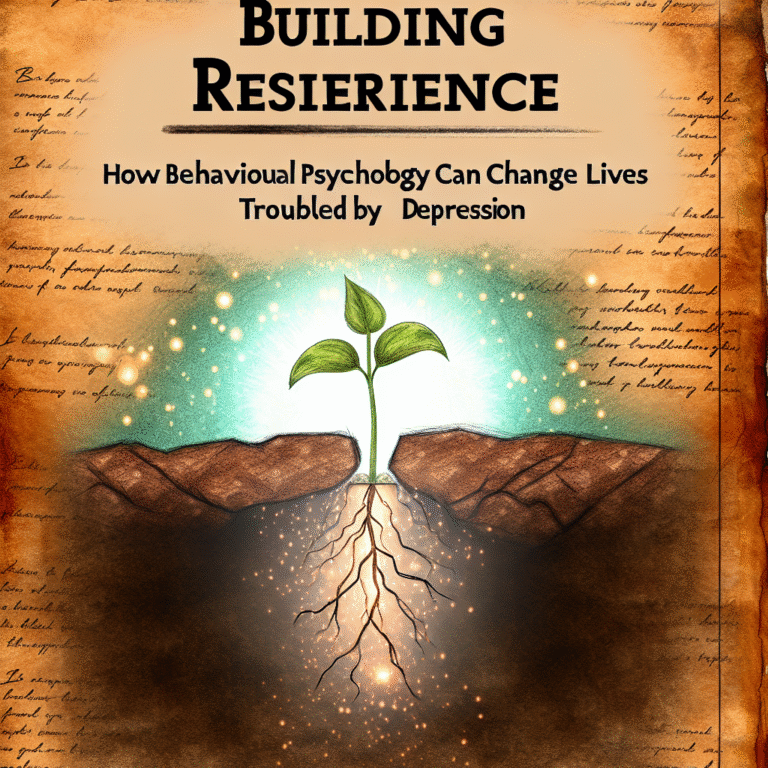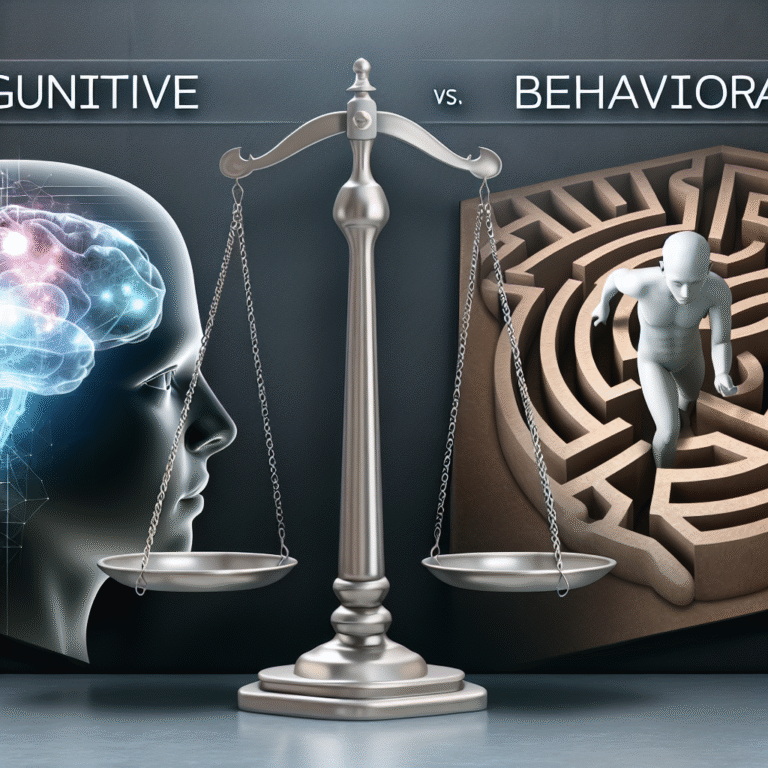
Nurturing Resilience: Behavioral Insights into Overcoming Childhood Adversity
Introduction
Childhood adversity can leave a profound imprint on an individual’s psyche, shaping their future in myriad ways. It’s no secret that many children face challenges ranging from family instability, economic hardship, to health issues. Yet, some emerge from these trials not just unscathed but thriving. The science of resilience—our ability to bounce back from hardship—is at play here. Nurturing Resilience: Behavioral Insights into Overcoming Childhood Adversity delves deep into how children can cultivate resilience, transforming their potential into positive outcomes even in the face of adversity.
Understanding how to nurture resilience is essential not just for parents or educators, but for society as a whole. In this article, we will explore behavioral insights that enable children to overcome adversity, featuring real-world examples and actionable strategies that foster resilience.
Understanding Resilience
Resilience is often defined as the ability to adapt positively to adversity. Research shows that resilience isn’t just an inborn trait; it can be developed through various life experiences and relationships.
The Science Behind Resilience
At its core, resilience involves a multifaceted array of psychological, biological, and social components:
- Psychological Factors: These encompass traits like optimism, emotional regulation, and problem-solving skills.
- Biological Aspects: Neurobiological research reveals that our brains can change (neuroplasticity), allowing us to develop new coping mechanisms.
- Social Influences: Support from family, friends, and community plays a pivotal role in nurturing resilience.
How Adversity Affects Development
The Impact of Adversity on Mental Health
Childhood adversity is correlated with long-term mental health issues, including depression, anxiety, and low self-esteem. A study published in the Journal of Child Psychology and Psychiatry found that children who experienced multiple adversities were at a considerably higher risk for developing mental health disorders later in life.
Table 1: Effect of Childhood Adversity on Mental Health
| Type of Adversity | Impact on Mental Health |
|---|---|
| Economic Hardship | Increased anxiety and depression |
| Family Instability | Lower social competence |
| Abuse or Trauma | Higher rates of PTSD |
Resilience as a Buffer
While adversity poses risks, resilience can act as a buffer. Children with strong resilience tend to display better emotional regulation, fewer behavioral issues, and enhanced social skills, enabling them to cope with stress more effectively.
Nurturing Resilience: Key Behavioral Insights
1. The Power of Positive Relationships
Building strong, supportive relationships is crucial in nurturing resilience. Studies highlight that children who have at least one reliable adult show greater resilience compared to those who lack supportive connections.
Case Study: The Role of Mentorship
In a groundbreaking program called Big Brothers Big Sisters, researchers found that children paired with mentors exhibited better academic performance and emotional well-being. This demonstrates how positive adult relationships can serve as a protective factor against adversity.
2. Encouraging a Growth Mindset
A growth mindset—in which individuals believe that their abilities can be developed through hard work and dedication—plays a vital role in resilience.
Case Study: The Dweck Findings
Carol Dweck’s research illustrates that children who are praised for effort rather than innate intelligence develop a growth mindset. In the face of challenges, they view obstacles as opportunities to learn rather than as hopeless situations.
3. Teaching Effective Coping Strategies
Equipping children with a toolbox of coping strategies is essential. These can range from mindfulness practices to problem-solving skills.
Case Study: Mindfulness in Schools
Schools implementing mindfulness programs have seen improved resilience among students. Programs have reported reduced levels of anxiety, more significant emotional regulation, and increased focus among children who practice mindfulness regularly.
4. Setting Realistic Goals
Goal setting instills a sense of purpose and direction. When children set and achieve realistic goals, they build confidence and a sense of ownership over their lives.
Case Study: The 4-H Program
The 4-H Program, which empowers youth through hands-on projects in various areas, has proven effective in teaching goal-setting skills. Participants learn to set achievable goals, which enhance their resilience and ability to face challenges.
5. Promoting Emotional Literacy
Understanding and expressing emotions is crucial in developing resilience. Children who can articulate their feelings are better equipped to navigate adversity.
Case Study: Emotional Intelligence Programs
Schools that have integrated emotional intelligence training into their curricula have reported substantial improvements in students’ ability to manage their emotions and cultivate empathy—key components of resilience.
Actionable Strategies for Parents and Educators
1. Foster Open Communication
Encourage children to share their thoughts and feelings openly. Create a safe space where they can express themselves without fear of judgment.
2. Model Resilience
Children learn by observing adults. Demonstrate resilience by showing how you cope with your challenges. Discuss your thought processes, decisions, and feelings openly.
3. Encourage Community Involvement
Participating in community service builds empathy and social connections, crucial elements for resilience.
4. Teach Problem-Solving Skills
Engage children in discussions about potential solutions when they encounter problems. This helps them become adept at overcoming obstacles.
5. Celebrate Efforts, Not Just Successes
Focus on the process of learning and growing rather than the end result. Acknowledge hard work and perseverance.
Conclusion
Nurturing Resilience: Behavioral Insights into Overcoming Childhood Adversity reveals that while adversity can leave deep scars, resilience serves as a powerful antidote. Our exploration emphasizes that resilience is not merely an innate quality but a skill that can be cultivated through positive relationships, goal setting, emotional literacy, and effective coping strategies.
As we empower the next generation to harness their inner resilience, we create a brighter future not just for individuals but for society as a whole. Let us champion the cause of nurturing resilience, reminding children that challenges are not the end of the road but stepping stones to greater strength.
FAQs
1. What is resilience and why is it important?
Resilience is the ability to adapt positively in the face of adversity. It is important because it helps individuals cope with stress, recover from setbacks, and develop emotional strength.
2. How can parents help their children build resilience?
Parents can help by fostering open communication, modeling resilience, teaching problem-solving skills, and supporting emotional expression.
3. Are there specific programs that promote resilience in children?
Yes, mentorship programs like Big Brothers Big Sisters and school-based initiatives focusing on emotional intelligence and mindfulness.
4. What role do schools play in nurturing resilience?
Schools can implement programs that foster emotional intelligence, provide supportive environments, and teach coping strategies to help children face adversity.
5. Can resilience be learned later in life?
Absolutely. While early experiences are influential, resilience can be developed at any age through practice, support, and the acquisition of new skills.
By understanding the dynamics of resilience and the behavioral insights behind overcoming childhood adversity, we can equip ourselves and future generations to face challenges head-on and flourish in spite of them.
















